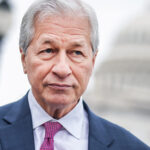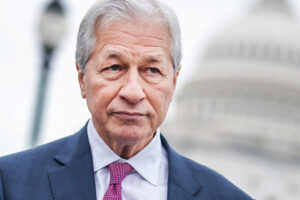
Bloomberg
Fueling the Endless Rally Is a Raft of Real-Time Reopening Data
(Bloomberg) — Amusement parks tickets. Business-class plane reservations. Drive-thru traffic at McDonald’s.Now more than ever, investors are leaning on real-time data to buttress their bullishness on the U.S. stock market. They’re sifting through an ever-widening array of snapshots at a time when some government figures are being distorted by year-ago comparisons to an economy hobbled by a recession.Of course, no one needs esoteric datasets to see that the U.S. — once the epicenter of the pandemic — is on the mend, notes Paul Hickey, co-founder of Bespoke Investment Group. Deaths are down, vaccinations are up and consumers are spending again. But with the snap-back recovery in the books and stocks perched at the highest valuations in two decades, the hunt is on for indicators to fine-tune the bull case — or uncover an early warning signal to get out before being blindsided by a crash.The following is a rundown of what market pros say they’re watching.Planes, Trains and Job PostingsSit Investment Associates’s Bryce Doty is scouring travel websites. He checks out destination hotels, resorts, Disney theme parks — anything to gauge mid-summer availabilities. If he’s not looking at those sites, he sees how long it’s taking ships to unload goods on the West Coast, where there are backlogs. Shipments of modal rail cars are another metric — it’s a proxy for how many retail goods are on the move across the country. All have helped the Minneapolis-based senior portfolio manager frame his investment strategy over the past year.Doty has also looked at employment ads and the ratio of part-time versus full-time positions. Recently, he’s seen the shift to permanent positions “explode.” He’s kept casual tabs on help-wanted signs at stores. “We are constantly on the lookout for these types of real-time indicators.”JJ Kinahan, chief market strategist at TD Ameritrade, monitors the percentage of overall flight bookings made up by business travelers. That’s because the number of vacationers could drop once the back-to-school season comes around, whereas business travelers could be year-round.“To me, that’s going to be the ultimate sign that we’ve turned the corner,” he said in an interview.Getting Back to Pre-Pandemic RoutinesThe number of per-day passengers through TSA checkpoints has increased, averaging 1.4 million over the past month. Though that’s still down from 2019 levels, the numbers have been steadily climbing — they averaged about 850,000 in December, for instance, when many traveled for the holidays. Compared to 2019, daily restaurant bookings through OpenTable have risen since the start of the year, though they haven’t yet fully recovered.To Jeff Schulze at ClearBridge Investments, such data is useful because it allows him to see the extent to which consumers are getting back to pre-pandemic routines. The investment strategist says everything from restaurant reservations and the number of passengers boarding planes to Google’s mobility data gives a glimpse into how people are engaging with the services side of the economy. Investors will be beholden to these statistics as long as the virus remains a threat to the economy — but a drop in cases will be a catalyst for growth.“The data continues to surprise economists, and I think if this trend can continue, you’re going to continue to see a market that goes higher into the summer,” Schulze said. “It’s trending very much in the right direction, mobility measures are moving in the right direction.”More Drive-Thrus, Less LoungewearChris O’Keefe, managing director at Logan Capital Management, says he’s analyzing announcements from consumer discretionary companies including McDonald’s and Nike to gauge lifestyle changes as people become more comfortable leaving their homes.“The pent-up demand is phenomenal, everyone wants to get out there and go out to eat and go travel,” he said. “You can feel the jail break as people are getting out there and doing more.”For McDonald’s, he’s looking at drive-thru traffic, which he expects to increase as people go back to work, as well as the number of diners inside its restaurants. “People are still slow to move to that but the trend is accelerating,” O’Keefe said.He’s also watching Nike closely for signs that customers are buying more traditional gym clothing and shoes — and less loungewear.With cases falling, cyclical industries — including travel, hotel and airline stocks — could “run big,” according to Fundstrat Global Advisors’s Tom Lee. Small-cap stocks as well as sectors like energy could also benefit. “This is a significant bullish equity development,” he wrote in a recent note.Taking CreditCredit-card use is rebounding strongly, too. For the week ending April 24, total card spending based on Bank of America credit and debit cards was up 45% year over year and 20% on a two-year basis, the bank’s economists Michelle Meyer and Anna Zhou wrote in a recent note.That data is useful in gauging consumer activity, said Tom Martin, senior portfolio manager at GLOBALT Investments. Though the spending stats aren’t the sole data point he and his team consider, they do have an influence on their decisions.“People using credit cards — there’s just so much more of that happening,” he said. “People are putting stuff on their credit cards — you have a good base of data from that.”Traditional IndicatorsMore traditional economic indicators also point to a pick-up in the economic rebound. U.S. economic growth accelerated in the first three months of the year as personal consumption — the biggest part of the economy — surged an annualized 10.7%, the second-fastest pace since the 1960s.Applications for regular state jobless benefits are hovering at a 13-month low, and U.S. retail sales posted the second-largest monthly advance on record last month as stimulus checks and a broader reopening of the economy fueled consumer spending.Meantime, a slew of factory surveys point to a rapidly improving manufacturing sector, including the Institute for Supply Management’s factory index which jumped to its highest level in 37 years in March.“We’ve seen very substantial progress in the vaccines in many places, we see economies reopening, we see how much pent-up demand there is,” Randy Frederick, vice president of trading and derivatives for Charles Schwab, said by phone. “That’s a good thing and those things are relevant — and what we’ve seen the market do is extend its timeline for moving ahead of the economy. The market always moves ahead of the economy.”For more articles like this, please visit us at bloomberg.comSubscribe now to stay ahead with the most trusted business news source.©2021 Bloomberg L.P.










